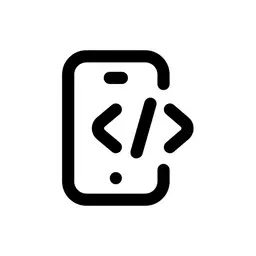As businesses expand globally, the need for localization has become more critical than ever.
At the same time, no-code app builders have transformed the way we create applications, making it possible to build software without writing a single line of code.
This guide explores two approaches to localization using no-code builders—ChatGPT plugins vs native tools.
The Rise of AI in Localization
AI-powered localization tools can significantly speed up the translation process, maintain consistency across languages, and even adapt content to local cultural nuances.
No-Code Builders and Localization
No-code builders have democratized app development, allowing non-technical users to create multilingual apps without extensive coding knowledge.
Benefits of AI-Powered Localization in No-Code Builders
- Speed: AI can translate content much faster than human translators, allowing for rapid deployment of localized versions.
- Consistency: AI ensures consistent terminology and style across all translated content.
- Cost-effectiveness: Automated translations can significantly reduce localization costs.
- Scalability: AI-powered tools can handle large volumes of content across multiple languages simultaneously.
ChatGPT Plugins for Localization
ChatGPT, the popular AI language model, has opened up new possibilities in the world of localization through its plugin ecosystem. These plugins can be integrated into no-code builders to provide powerful localization capabilities.
Real-World Examples of ChatGPT Localization:
- Function: Extend ChatGPT’s capabilities to auto-translate text within no-code builders like BotPenguin or Bubble.
- Strengths: Rapid deployment, pre-built templates, and integration with 80+ platforms (e.g., WhatsApp, CRM systems).
- Limitations: Limited control over layout adjustments post-translation.
Advantages of ChatGPT Plugins
- Natural Language Understanding: ChatGPT’s advanced natural language processing enables more nuanced and context-aware translations.
- Customization: Plugins can be tailored to specific industries or content types, improving translation accuracy.
- Continuous Learning: ChatGPT can learn from user feedback and improve its translations over time.
Limitations of ChatGPT Plugins
- Integration Complexity: Incorporating ChatGPT plugins into existing no-code platforms may require additional development work.
- Potential for Errors: As an AI model, ChatGPT can sometimes produce inaccurate or nonsensical translations that need human review.
- Privacy Concerns: Sending content to external AI services may raise data privacy issues for some organizations.
Native Localization Tools in No-Code Builders
Many no-code platforms now offer built-in localization features that leverage AI technology. These native tools are designed to work seamlessly within the no-code environment, providing a more integrated experience.
Real-World Examples of Native Tools Localization:
- Examples: SimpleLocalize (Figma integration), GPT-4 Vision.
- Strengths: Real-time design previews, character limits to prevent overflow, and automated UI testing via screenshots.
- Limitations: Steeper learning curve for non-technical users.
Advantages of Native Tools
- Platform-Specific Optimizations: Native tools can take advantage of platform-specific features and workflows.
- Simplified Workflow: Users can manage localization directly within the no-code builder interface.
Limitations of Native Tools
- Limited Language Support: Native tools may not support as many languages as ChatGPT localization plugins.
- Less Advanced AI: The AI capabilities of native tools may not be as sophisticated as those of dedicated language models like ChatGPT.
- Lack of Customization: Native tools may offer fewer options for customizing the localization process to specific needs.
Comparing ChatGPT Plugins vs Native Tools
When deciding between ChatGPT plugins and native localization tools for your no-code project, consider the following pros and cons:
1. Ease of Use
Native tools generally offer a more streamlined experience, as they’re integrated directly into the no-code platform. ChatGPT plugins usually require additional setup and configuration.
2. Customization Options
ChatGPT plugins typically offer more flexibility in terms of customization, allowing you to fine-tune the translation process for specific needs. Native tools may have limited customization options.
3. Language Support
While native tools often cover the most common languages, ChatGPT plugins may offer support for a wider range of languages and dialects.
4. Cost
Native tools are often included in the no-code platform’s pricing, while ChatGPT plugins may incur additional costs.
Best Practices for AI-Powered Localization in No-Code Builders
Regardless of whether you choose ChatGPT plugins or native tools, follow these best practices to ensure successful localization:
- Start with High-Quality Source Content: Make sure your original content is well-written and error-free to improve translation accuracy.
- Use Style Guides and Glossaries: Provide clear guidelines and terminology to maintain consistency across languages.
- Implement a Review Process: While AI can handle a lot of the translation work, human review is still essential for catching errors and ensuring cultural appropriateness.
- Test Thoroughly: Test your localized app across different devices and scenarios to create a smooth user experience in all supported languages.
- Combine AI + Human Review: GPT-4 handles bulk translations; humans refine nuances.
- Regular Updates: Regularly review and update your localized content to keep it current and accurate.
- Monitor Performance: Track metrics like bounce rates on translated pages to identify layout issues.
The Future of AI-Powered Localization in No-Code Builders
As AI technology continues to advance, we can expect even more powerful localization capabilities in no-code builders. Some trends to watch for include:
- Improved Context Understanding: AI models will become better at grasping cultural context and nuances, leading to more natural-sounding translations.
- Real-Time Localization: Future tools may offer instant localization as content is created, streamlining the development process even further.
- Voice and Video Localization: AI-powered tools will expand beyond text to include seamless localization of voice and video content.
- Personalized Localization: AI may adapt content not just to different languages, but to individual user preferences and cultural backgrounds.
Choosing the Right Tool for Your Project
Both ChatGPT plugins and native localization tools offer powerful capabilities for localizing no-code applications. The choice between them depends on your specific needs, budget, and the complexity of your project.
For projects requiring high levels of customization and support for numerous languages, ChatGPT plugins may be the better choice. On the other hand, if seamless integration and ease of use are your top priorities, native tools might be more suitable.
Ultimately, the goal is to create a localized application that resonates with your target audience across different cultures and languages. By leveraging AI-powered localization tools in your no-code builder, you can expand your reach and create truly global applications with unprecedented ease and efficiency.
As you embark on your localization journey, remember that while AI can handle much of the heavy lifting, human oversight and cultural understanding remain crucial. Combine the power of AI with human expertise to create localized applications that not only speak the language but also capture the heart of your global audience.
Citations:
[1] https://botpenguin.com/blogs/the-best-no-code-way-to-build-custom-chatgpt-plugins
[3] https://customgpt.ai/customgpt-plugins/
[4] https://www.dtplabs.com/tips-for-maintaining-design-integrity-in-multilingual-layout/
[5] https://simplelocalize.io/for-designers/
[6] https://community.hubspot.com/t5/APIs-Integrations/HubSpot-CMS-Localization/m-p/1038587
[7] https://custom.mt/openai-update-what-it-means-for-localization/
[8] https://phrase.com/blog/posts/chatgpt-localization/
[10] https://www.linkedin.com/pulse/gpt-4-turbo-vision-what-mean-localization-custom-mt-pra1f


Leave a Reply